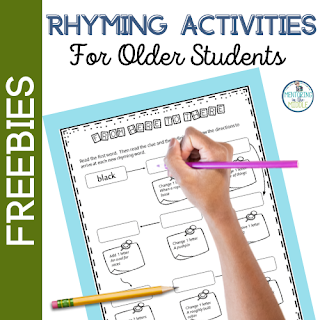By the time you get to the 5th or 6th grades, reading fluency gets less attention than it does at the primary level. If you're working with students this summer, it's the perfect opportunity to help them strengthen their fluency in fun, low-pressure ways. These three proven, game-like activities are simple, engaging, and teacher-approved.
Many fluency activities that you can do with children only take 10-15 minutes a day. Students benefit from the practice because even short practice has long-term consequences. Each of these has a game-like quality, which makes it fun.
There is a strong correlation between reading fluency and comprehension. Close the gap even a bit for positive long-term consequences!
You want your upper elementary and middle school students to:
- read more than 100 words per minute
- recognize multiple words automatically
- make fewer errors
- self-correct mistakes
- understand what they read
Rhyming activities are one fun way to work on phonemic awareness. At the upper elementary level, students learn that not all words that sound alike are spelled the same way. Seeing some of these words repeatedly helps cement them into their brains.
As weird as it may sound, having your students read nonsense words can help a lot, because you can focus on decoding skills. As they grow in nonsense word fluency practice, students use phonetic skills and you can more easily see where their strengths and weaknesses are.
Here's a FREE Nonsense Words Worksheet that I created for my students.
Note: Make sure your students understand that these are nonsense words. Because of that, it's best not to use these with students for whom English is a second language, to avoid confusion with actual words.
Reading pyramids
I've written about reading fluency activities here, especially how they helped students feel. By the upper elementary grades, kids know who struggles to read and who doesn't. And the kids who struggle often feel very self-conscious.
When I designed reading pyramids for my students, it was to give them practice with repeating common words. What surprised me was how much the kids enjoyed using these!
- Easy to work on alone or with a partner
- Improvement happen rapidly
- Highly motivational
These are perfect for summer!





No comments
Post a Comment